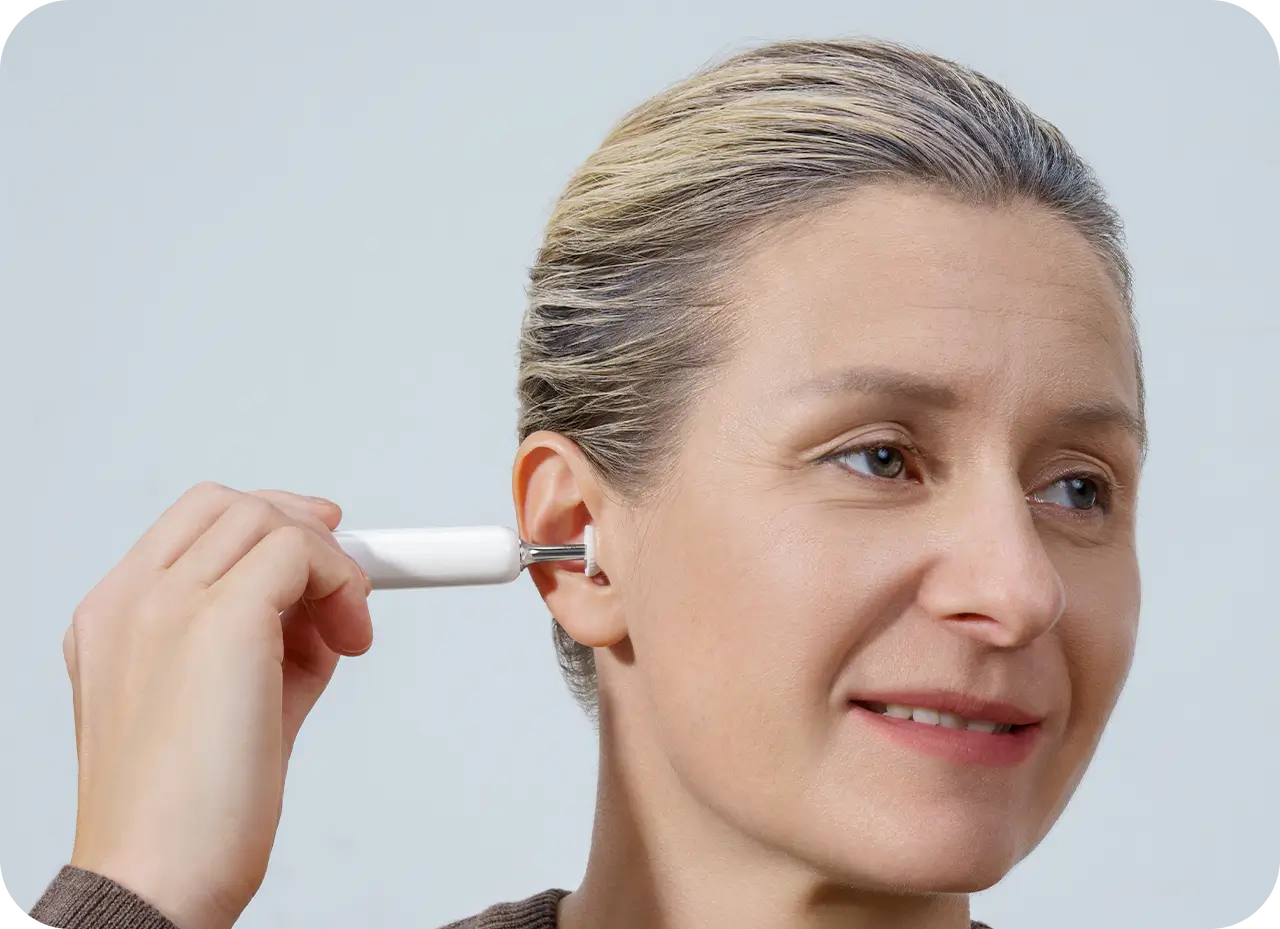No, ear infections in adults are not contagious. While the bacteria or viruses that cause ear infections can spread from person to person, the infection itself doesn’t pass directly from one person to another. Ear infections typically develop as a result of an upper respiratory infection, sinus problems, or even water exposure, but they’re not something you can catch just by being around someone who has one.
In this article, we’ll take a closer look at what causes ear infections, how to prevent them, and what to do if you think you might have one. Let’s dive in!
What Causes Ear Infections in Adults?
Ear infections in adults can happen for a variety of reasons. There are three main types of ear infections: outer ear infections (otitis externa), middle ear infections (otitis media), and inner ear infections. While middle ear infections are the most common, they can all be triggered by different factors.
-
Bacteria and Viruses: The most common culprits behind ear infections are bacteria or viruses. These infections can start in the upper respiratory system (like the common cold or flu) and spread to the ear.
-
Sinus Infections: If you have a sinus infection, the fluid and mucus buildup can lead to an infection in your ears as well.
-
Allergies: Allergies can also cause fluid to build up in the ear, leading to infections.
-
Swimmer’s Ear (Otitis Externa): If water gets trapped in the ear (often after swimming), it can create a breeding ground for bacteria, leading to an outer ear infection.
So, while ear infections can stem from many sources, they’re usually related to other upper respiratory or sinus issues.
Related: How Often Should a Man Clean His Ears?
Symptoms of Ear Infection in Adults
Ear infections in adults can manifest in different ways depending on the type of infection and where it occurs in the ear. However, there are some common symptoms you should watch out for:
-
Ear Pain or Pressure: This is the most common symptom. You might feel a sharp, sudden pain, or a dull, constant ache in or around the ear. The pressure in the ear may increase as the infection progresses.
-
Hearing Loss: A feeling of fullness or muffled hearing is common, especially if there’s fluid buildup in the middle ear. The infection may temporarily affect your hearing until it clears up.
-
Fluid Drainage: If there’s drainage from the ear, it might be clear, cloudy, or even pus-like. This usually occurs if the eardrum has ruptured or if the infection has spread to the outer ear canal.
-
Fever: Especially if the infection is caused by bacteria, you may develop a fever as your body tries to fight off the infection.
-
Dizziness or Balance Issues: Infections in the inner ear can affect your balance and make you feel dizzy, lightheaded, or unsteady on your feet.
-
Tinnitus (Ringing in the Ears): Some people may experience a ringing or buzzing sound in the ear, which can be annoying and add to the discomfort.
-
Itching or Irritation in the Ear: If the infection is in the outer ear canal (like swimmer’s ear), you might feel itchy or irritated inside your ear.
If you experience any of these symptoms and they don’t improve after a few days or worsen, it’s a good idea to consult with a healthcare professional for proper diagnosis and treatment.
How to Effectively Prevent Ear Infections
Ear infections can be uncomfortable and sometimes even painful, but there are several steps you can take to help prevent them. Here are some practical tips for keeping your ears healthy:
-
Keep Your Ears Dry: Moisture in the ear canal can promote bacterial growth and lead to infections. After swimming or showering, make sure to dry your ears thoroughly with a towel or by tilting your head to let excess water drain out. You can also use earplugs when swimming to prevent water from getting in.
-
Avoid Inserting Objects Into Your Ears: Don’t use cotton swabs or other objects to clean the inside of your ears. This can push wax further into the ear canal or cause damage to the delicate structures inside the ear, leading to infections. Simply clean the outer part of your ear with a cloth.
-
Regular Ear Wax Cleaning: Ear wax buildup can lead to infections and hearing problems. While the ear canal naturally clears wax on its own, sometimes it can accumulate and cause discomfort. Using safe, effective methods to clean your ears can prevent blockages.
-
A great tool for this is Bebird’s ear cleaning tools, which offer gentle suction and a built-in camera to allow you to safely and easily monitor the cleaning process. With Bebird’s ear camera cleaner, you can ensure your ears stay clean and free from wax buildup, reducing the risk of infections.
-
Treat Upper Respiratory Infections Quickly: Since ear infections often develop after a cold or sinus infection, it’s important to treat these infections early. If you notice symptoms like nasal congestion or a sore throat, take measures to relieve them and reduce the risk of an ear infection.
-
Use Ear Drops for Wax Build-Up: If you experience excessive earwax, use over-the-counter ear drops to soften and clear it. This can help prevent earwax from becoming impacted, which can lead to infections.
-
Keep Allergies Under Control: Allergies can lead to fluid buildup in the ears, making them more susceptible to infection. If you have allergies, make sure to manage them with antihistamines or other allergy medications to reduce ear problems.
-
Practice Good Hygiene: Washing your hands regularly and avoiding close contact with people who have upper respiratory infections or colds can reduce your chances of catching something that could lead to an ear infection.
-
Get Vaccinated: Certain vaccines, like the flu shot, can help prevent respiratory infections that might lead to ear infections. If you’re prone to getting ear infections, talk to your doctor about other vaccines that may help.
By following these simple prevention tips, you can reduce your chances of dealing with painful ear infections. Regular ear wax cleaning with tools like Bebird’s ear cleaning devices not only helps to avoid infections but also keeps your ears feeling fresh and healthy.
FAQs
What Can Be Mistaken for an Ear Infection?
Ear infections can sometimes be confused with other health conditions that cause similar symptoms, especially when the pain or discomfort occurs around the ear area. For instance, sinusitis can cause pain and pressure in the sinuses, which might radiate to the ears, giving the impression of an ear infection. Similarly, TMJ disorders (problems with the jaw joint) can cause pain around the ear, which may be mistaken for an infection in the ear itself.
Another condition that often gets confused with an ear infection is allergic rhinitis, which involves inflammation of the nasal passages due to allergens. This can result in ear congestion or pressure, similar to what you’d experience with an ear infection. Earwax buildup is also a common issue that may cause pain and a sensation of fullness in the ear, leading people to think they have an infection. It’s important to get a proper diagnosis from a healthcare professional to distinguish between these conditions.
Do You Need Antibiotics for an Ear Infection in Adults?
Antibiotics are not always necessary for treating ear infections in adults. Viral ear infections, which are quite common, typically resolve on their own without the need for antibiotics. These infections often go away within a few days, and the treatment mainly focuses on relieving symptoms like pain and discomfort. Over-the-counter pain relievers or warm compresses may help ease the discomfort while the body fights the virus.
On the other hand, bacterial ear infections might require antibiotics to prevent complications and speed up recovery. If the ear infection is severe or doesn’t improve on its own, your doctor might prescribe antibiotics. It's important to avoid self-prescribing antibiotics and to follow a healthcare provider’s guidance to ensure the infection is treated properly and efficiently.
Can an Ear Infection Lead to Hearing Loss?
Yes, in some cases, an ear infection can cause temporary or even permanent hearing loss if left untreated. When the middle ear becomes infected, fluid can build up, causing the eardrum and bones in the ear to move less efficiently. This can impair hearing, but in most cases, hearing returns to normal once the infection is resolved and the fluid drains away.
In more severe cases, untreated or chronic ear infections can lead to damage to the structures of the ear, including the eardrum or bones in the middle ear. This could result in long-term or permanent hearing loss. To avoid these complications, it’s crucial to seek medical treatment promptly and follow through with any prescribed treatment plans to ensure proper recovery.
Conclusion
If you want to prevent ear infections, it’s important to practice good hygiene and ear care. Regularly cleaning your ears can help prevent the buildup of earwax, which can lead to discomfort or even infection. A helpful tool for this is the ear camera wax removal device, like Bebird, which allows you to clean your ears with precision and care. By using the built-in camera, you can monitor the cleaning process and avoid accidentally harming your ear canal or pushing wax deeper.
And if you find yourself dealing with an ear infection, make sure to seek medical advice if symptoms persist or worsen. Most ear infections are treatable, and with the right care, you'll soon be feeling better. Whether it’s through professional treatment or using at-home tools like Bebird, taking proactive steps to care for your ears can help keep infections at bay and maintain your overall ear health.












Leave a comment
All comments are moderated before being published.
This site is protected by hCaptcha and the hCaptcha Privacy Policy and Terms of Service apply.